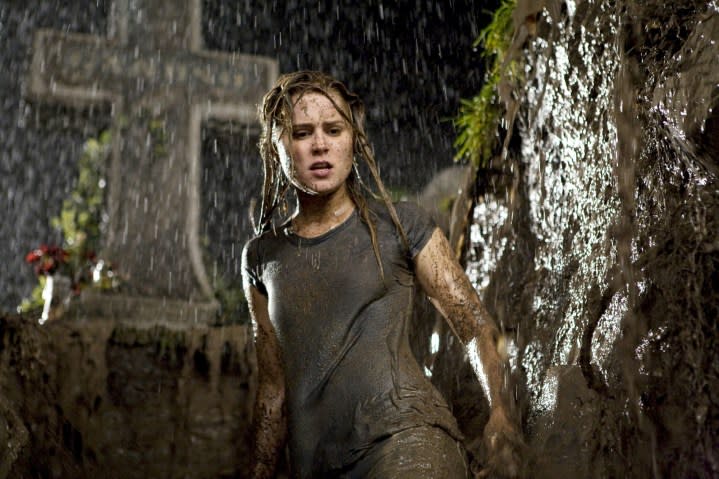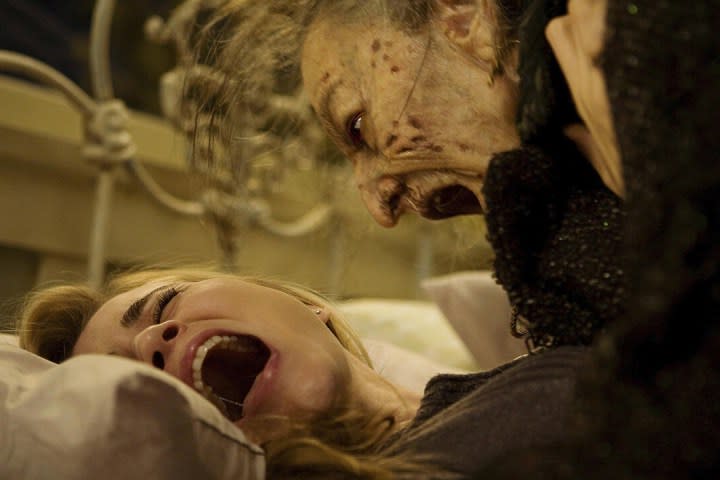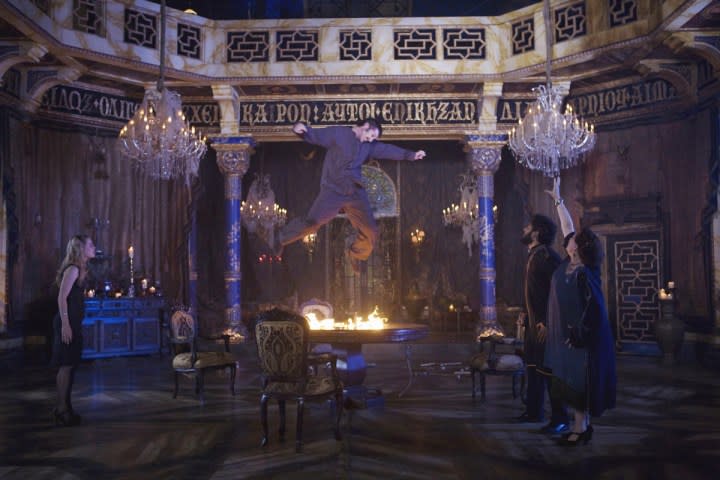This forgotten 2009 movie is a modern horror classic. Here’s why you should watch it (if you can)

Sam Raimi‘s output over the past 20 years has been disappointingly small. Throughout the 1980s and early ’90s, Raimi established himself as one of the most distinct artistic voices of his generation. With films like Evil Dead II, Darkman, and Army of Darkness, he combined his independent filmmaking roots with his uniquely goofy, acidic sense of humor to deliver horror and blockbuster experiences that are as confidently stylish as they are mind-bogglingly ludricous. In the late ’90s, he proved himself as a filmmaker capable of making award-worthy genre fare (A Simple Plan) and working with bona fide movie stars (Sharon Stone in The Quick and the Dead) before becoming a beloved household name by directing 2002’s Spider-Man and its sequel, 2004’s Spider-Man 2.
In the years since his artistically compromised Spider-Man 3 hit theaters in 2007, though, Raimi has more or less faded away from the mainstream consciousness. He’s only directed a few films since Spider-Man 3, including the ambitious, but disappointing Oz: The Great and Powerful and 2022’s Doctor Strange in the Multiverse of Madness, which he seemingly did as a favor to Marvel Studios. That said, between Spider-Man 3 and Oz: The Great and Powerful, Raimi did direct the underrated 2009 spine-chiller Drag Me to Hell.
The film, which celebrates its 15th anniversary this week, is one of the best horror comedies of the century. Despite that fact, it isn’t available to stream anywhere right now, and its praises have gone strangely unsung in recent years.

Written by Raimi and his brother, Ivan, before the former made 2002’s Spider-Man, Drag Me to Hell is a deranged horror comedy that feels of a piece with some of its director’s earliest films — namely, 1987’s Evil Dead II and 1992’s Army of Darkness. Like those movies, Drag Me to Hell adheres to its own cartoonish sense of logic (or illogic, if you’d prefer) that may be too odd for certain viewers, but which paves the way for some of the most audacious and unhinged narrative twists and visual gags that you’ll likely ever see. Its heightened tone is made apparent in the film’s prologue, which follows two parents as they unsuccessfully try to save their young son from a curse by taking him to a local medium, who’s forced to watch as he’s mercilessly dragged into a fiery chasm by spiteful spirits.
The movie then cuts forward several decades and shifts its focus to Christine Brown (a very game Alison Lohman), a bank loan officer who — in an attempt to prove herself capable of making tough decisions in front of her boss — decides to deny a mortgage extension to Sylvia Ganush (Lorna Raver), an older European Roma woman. In response, Sylvia ambushes Christine and curses her to three days of torment and then eternal damnation for “shaming” her. This setup, which is efficiently and exuberantly executed by Raimi in Drag Me to Hell‘s first act, is followed by an hour’s worth of increasingly demented, raucously silly sequences of terror and Looney Tunes-esque live-action comedy.
Drag Me to Hell (7/9) Movie CLIP - The Seance (2009) HD
Drag Me to Hell ranks firmly as Raimi’s most modestly budgeted modern film, but its smaller production budget (a reported $30 million) didn’t stop him from packing it full of insane set pieces. These include a daytime attack on Christine by a shadow demon and a midpoint séance that features physical transformations, moving pieces of furniture, levitating bodies, and — most hilariously of all — a talking goat that calls Lohman’s terrorized loan officer a “black hearted whore” to her face.
Raimi fills these sequences, as well as Sylvia’s initial carpark attack on Christine, with laugh-out-loud details and cutaways. From a demon coughing up the stiff body of Christine’s dead cat like a furball to Sylvia’s dentures falling out when she’s slammed into Christine’s car dashboard, Drag Me to Hell hits you with enough ingenious visual jokes to effectively remind you why Raimi felt like such a fresh voice when he first emerged on the filmmaking scene in the early ’80s.
Outside of its biggest set pieces, Drag Me to Hell still has plenty of other memorable moments to offer, including an unexpected nosebleed that quickly turns into a full eruption of blood at Christine’s workplace. The film is brimming with grotesque twists that escalate so rapidly that you can’t help but laugh at the absurdity of them along with Raimi. Drag Me to Hell is as mean-spirited as a horror comedy can get, but it throws all of its many jabs and jokes with enough style, energy, and wit that it quickly wins you over.

The film sees Raimi operating in complete tonal control all the way from its legitimately creepy, unnerving opening to its last-minute, all-time-great punch line of an ending. The latter scene sends Drag Me to Hell out on an appropriately sneering, crazed high (or low, depending on how you look at it) and cements the movie’s place as a horror comedy for the ages. In a lot of ways, it feels like the last true Sam Raimi film we’ve gotten. That’s a frustrating reality to grapple with, given that it’s been 15 years since Drag Me to Hell was released.
On the other hand, the studio jobs Raimi has done since only make it that much easier to appreciate the mad greatness of Drag Me to Hell, a film that walks a difficult tonal tightrope and emerges, unlike its characters, completely unscathed. It’s a horror comedy that knows exactly what it wants to do, and it does so with a belly full of acid and a wicked, cutting grin on its face the whole time.


